Liquid Roofing Best Practice
Liquid roofing is not a new concept; indeed it has been around in the form of natural bitumen since the early 1800s. However, unlike some other roofing types, the science behind it has developed over the decades, thanks in part to the arrival of new materials, such as acrylics, polyesters and polyurethanes.
Today, specifiers can choose from a wide range of high-performance products, each with their own specific characteristics. So what are main types of liquid roof? Where should they be used? And how should architects approach their design? Daniel Bosworth and Chris Page, respective Design & Technical Manager, and Product Manager at SIG Design & Technology provide the answers.
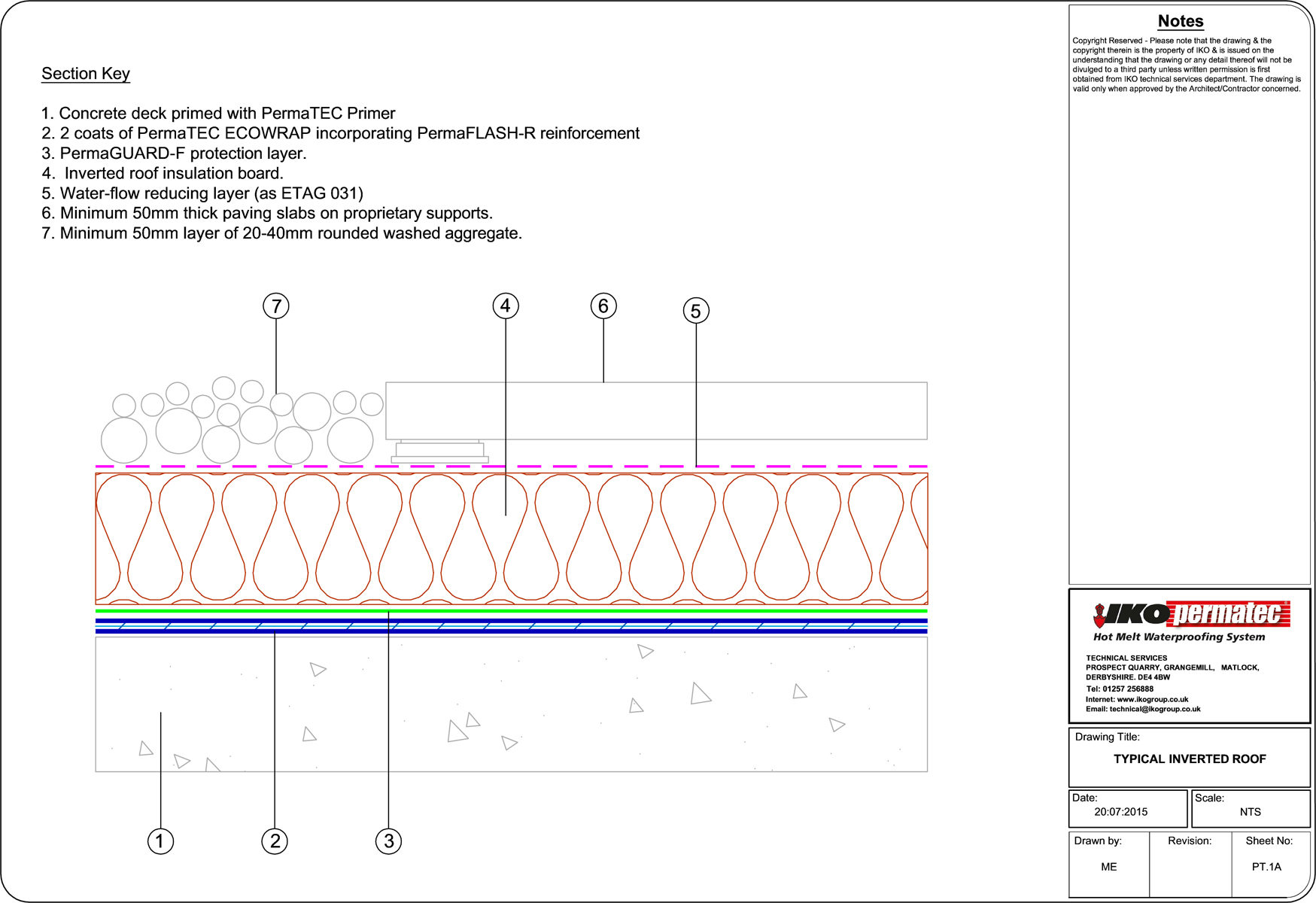
Example detail: IKO PermaTEC Hot Melt, typical inverted roof build up (IKO/SIG Design and Technology)
What is a liquid roof and what are the main types available?
A liquid roof is any roof covering applied in a liquid form. There are two specific types: hot- or cold-applied. Polymer-modified bitumen (commonly referred to as hot melt) and asphalt are among the most commonly used hot-applied systems. These products, which include IKO PermaTEC Hot Melt and IKO Permaphalt Mastic Asphalt are particularly suited to inverted roofs, podium decks and other large concrete structures.
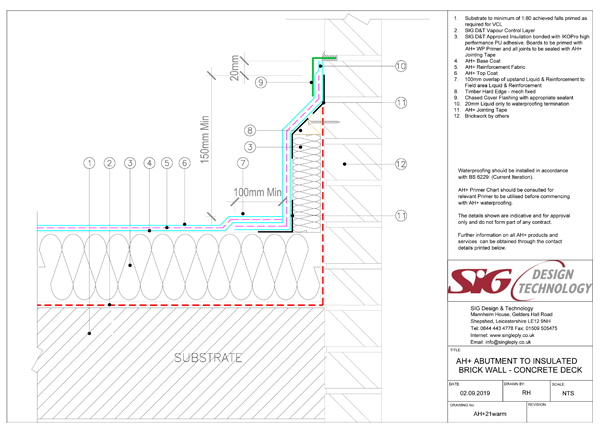
Example detail: Hydrostop AH+ liquid waterproofing, abutment to insulated brick wall – concrete deck (SIG Design and Technology)
Cold-applied liquid roofing systems are typically made from silane terminated polyethers, polyurethanes (PU or PUR), polymethyl methacrylate (PMMA), methyl methacrylate (MMA), and glass reinforced polyester resin (GRP). GRP is often favoured on small domestic projects for its durability and strength. Polyether- and polyurethane-based products, such as Hydrostop AH+ and SIGnature PU Liquid Waterproofing, are commonly specified on larger projects for their high-levels of tensile strength and elasticity, ability to accommodate complex detailing, fire performance and resistance to UV light.
Methacrylate-based systems, including Vulkem Liquid Waterproofing, are frequently installed on balconies, external walkways and car parks for reasons of mechanical resistance, speed of curing, and versatility. Some products, including Vulkem, can incorporate, coloured quartz, uni-colours or coloured flakes for added visual appeal.
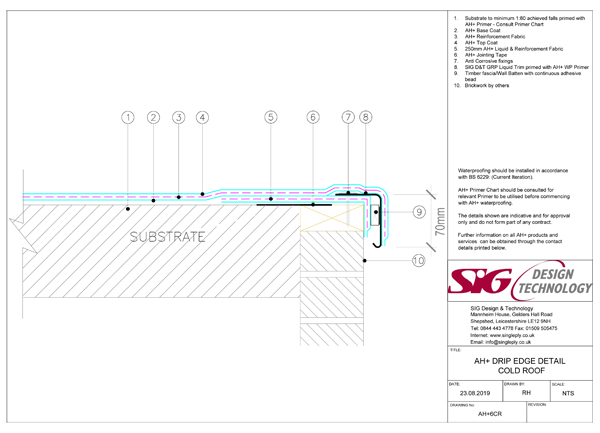
Example detail: Hydrostop AH+ liquid waterproofing, drip edge detail cold roof (SIG Design and Technology)
Advantages and disadvantages of liquid roofing
The seamless nature of liquid roofs means that they highly suited to ‘busy’ applications featuring multiple penetrations, including skylights, services, cleaning apparatus and rainwater outlets. Speed of application for both detailing and field areas is another key benefit. Most liquid systems do not require mechanical restraint where there is a change of direction. Liquid roofs also provide an effective solution for decks that cannot accommodate mechanical fixings of sufficient strength to resist wind uplift. Woodwool decks are a good example of this.
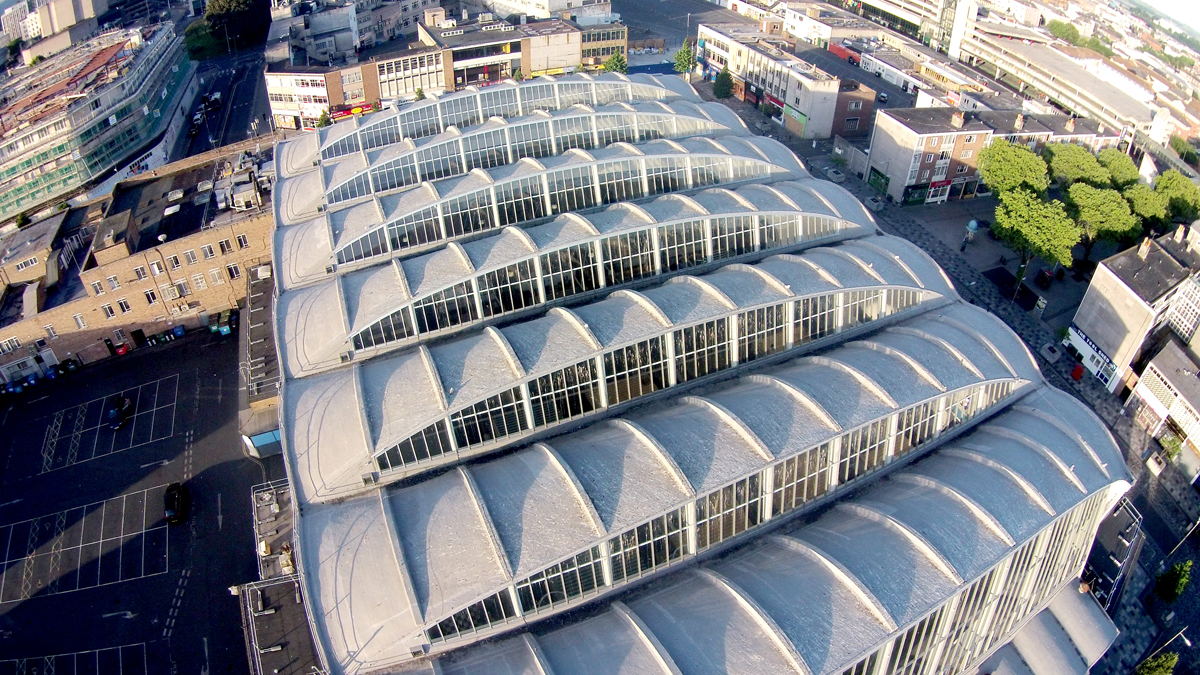
Plymouth Market. Easy to use Hydrostop AH+ re-waterproofs the grade II listed shell structure without need for stripping or or complex details (ph: Terence Smith)
One of the principal advantages of hot melt systems is their robustness. According to the British Board of Agrément (BBA), IKO PermaTEC Hot Melt will remain waterproof for the design life of the roof (in excess of 25-years). It can also be used to create pitch pockets, which are a highly effective means of accommodating roof penetrations. In terms of disadvantages, hot melt roofs can pose risks relating to the use of gas-fired boilers, and the temperature of the liquid upon application (180-200°C). As such, hot melt roofs should always be laid by an experienced, certified contractor.
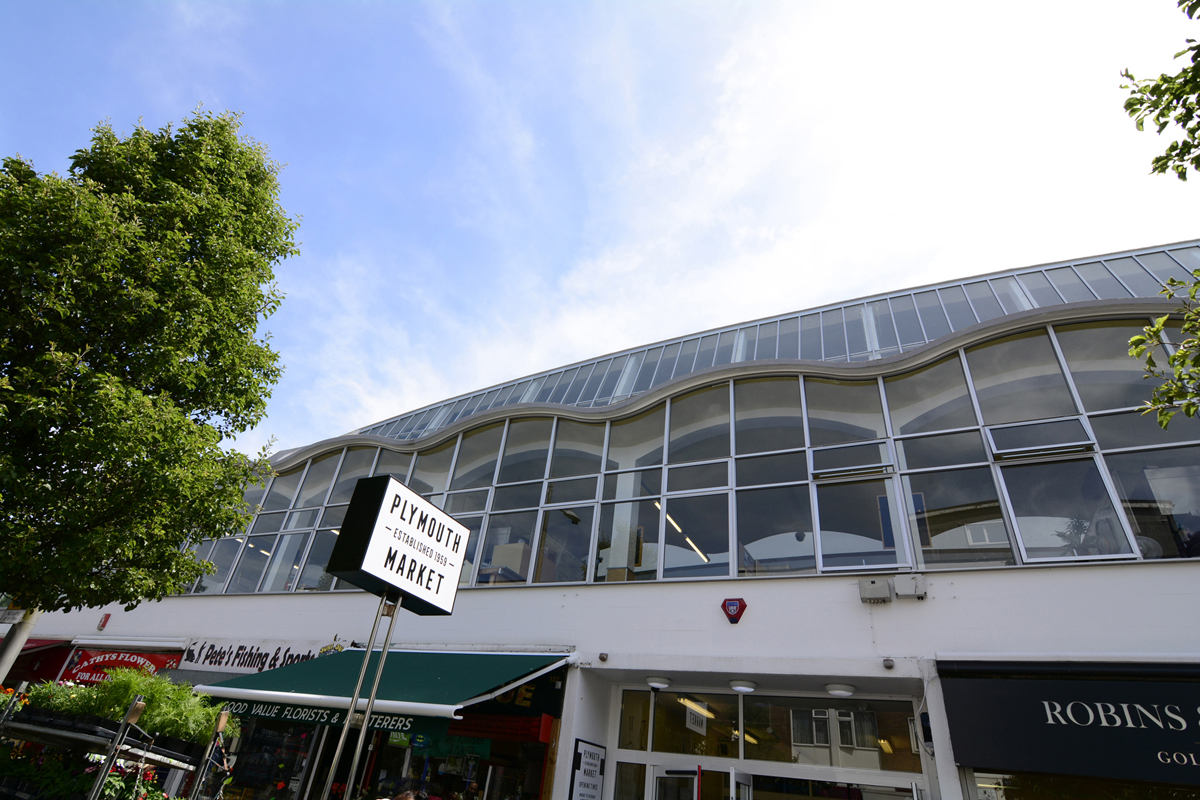
Plymouth Market front elevation (ph: Terence Smith)
An advantage of cold-applied systems is that they can be used on projects that forbid the use of hot works. They are also easy to maintain, vapour-permeable and well suited to limited access applications. However, the chemical-based content of some cold-applied liquid roof systems can be problematic for public projects due to the presence of potentially harmful vapours. The correct Health & Safety regime should be in place prior to installation of such products. Architects can alternatively specify a system such as Hydrostop AH+, which is solvent, fume and isocyanate-free, has a low-VOC content, and is virtually odourless.
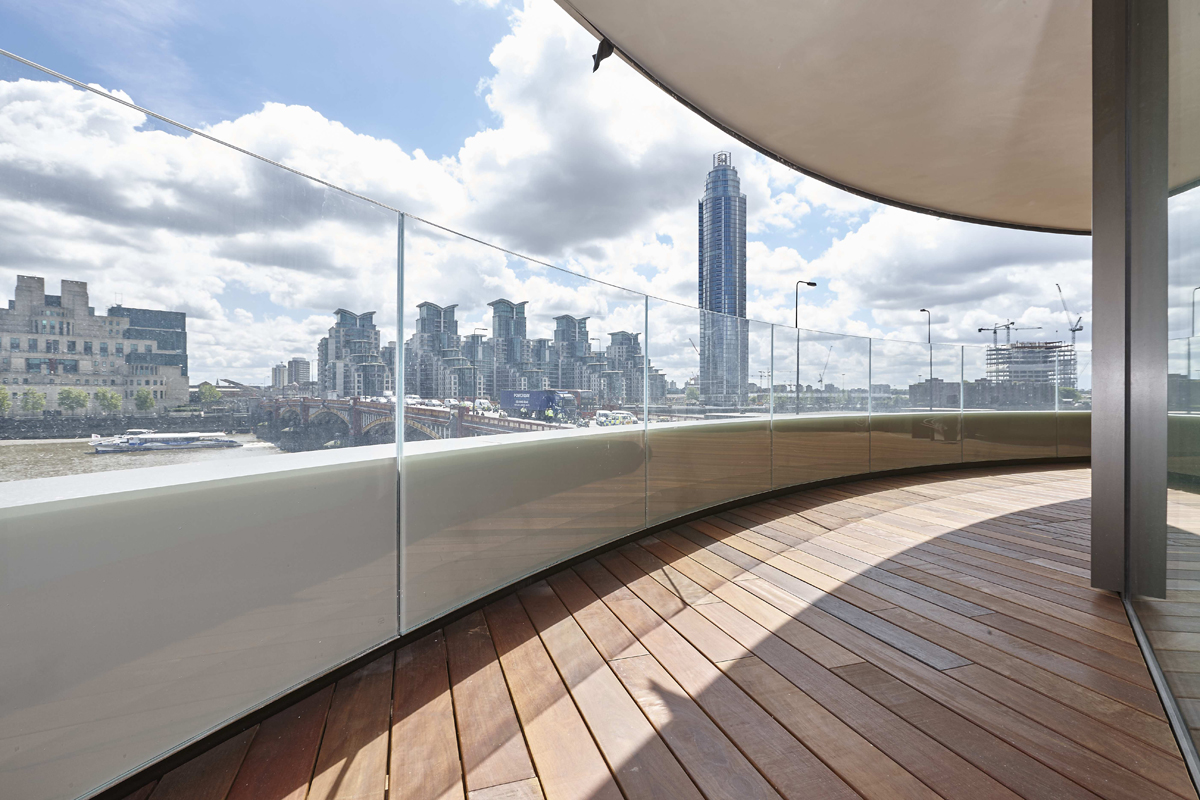
Riverwalk, London. Balconies waterproofed with Hydrostop AH+ liquid waterproofing for ease-of-use in tight, detailed areas (ph: Adam Coupe)
Choosing and designing a liquid roofing system
Architects should ensure that all the products within the specified system are compatible. Liquid waterproofing manufacturers will have approved products, including vapour control layers and insulation, so is vital to speak to them and obtain the relevant information, including their NBS J31 specification. Compatibility is also critical for overlay applications. Most bituminous substrates can be covered with a cold-applied liquid product, although associated primers may be required. Manufacturer advice should again be sought.
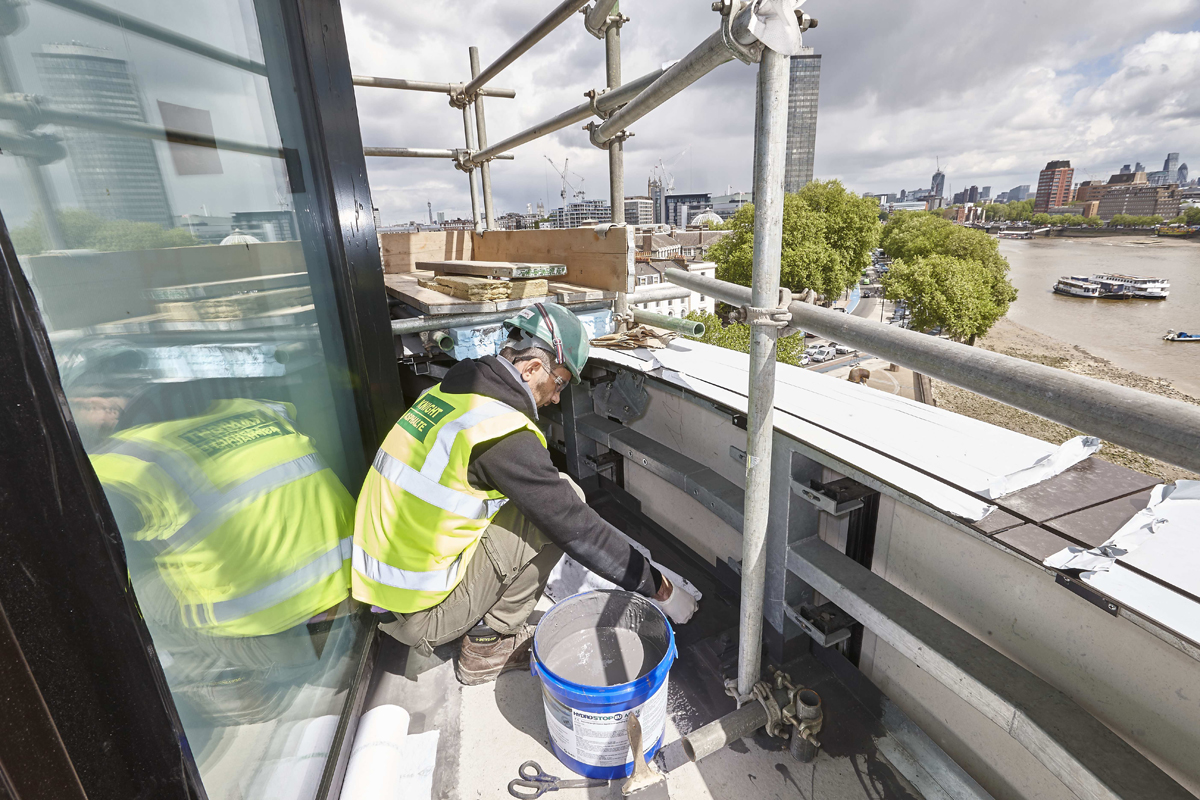
Hydrostop AH+ liquid waterproofing installation at Riverwalk, London (ph: Adam Coupe)
Application is another key consideration. If, for example, the roof accommodates air-conditioning units, it would be advisable to specify a solvent-free product to avoid fumes from the outside being drawn into the rooms below – particularly if the building is to remain occupied during the work.
Last but not least it is important to consider the roof falls and proposed season for installation. Different products, even within specific categories, can vary significantly in terms of the minimum air temperature required for installation and the degree of falls – if any – they can accommodate.
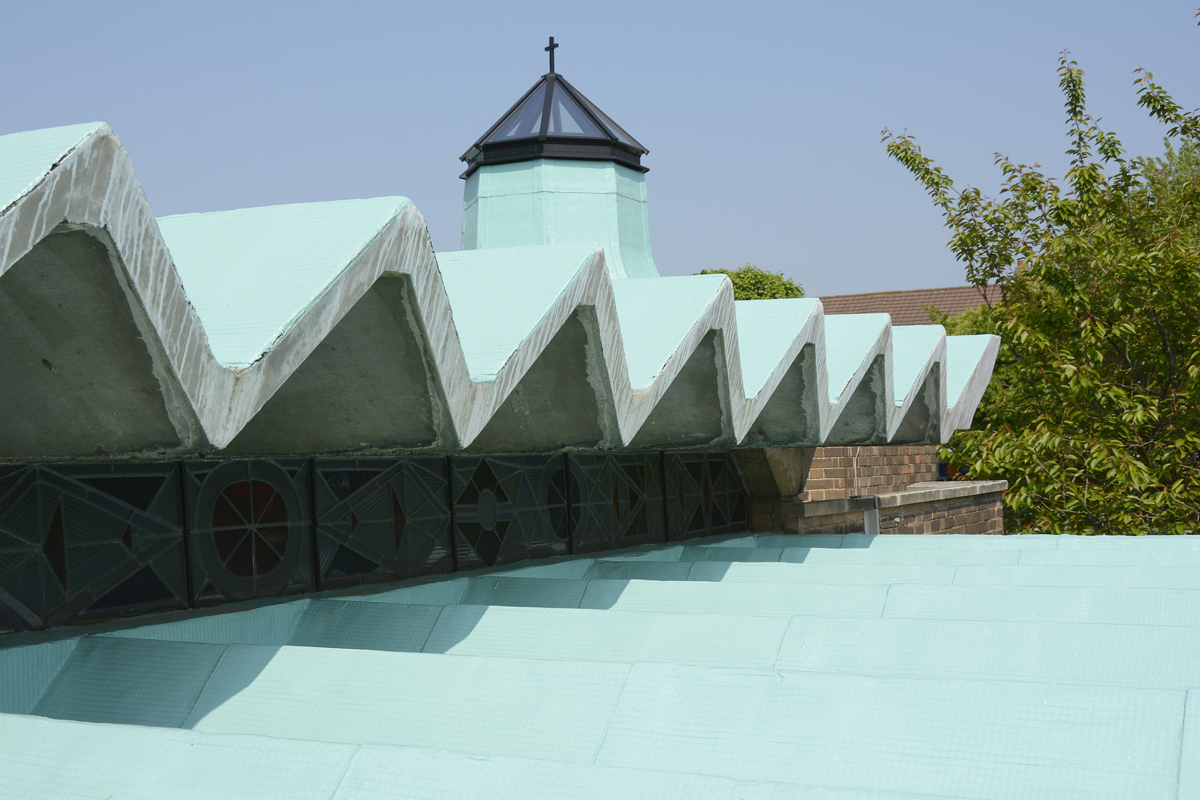
Our Lady Help of Christians Church, Birmingham. Colour-matched Repoma liquid recreates the original finish and repairs the waterproofing of this Grade II listed church (ph: Terence Smith)
What guarantees are available with liquid roofing systems?
SIG Design & Technology provides a range of guarantees, including 10 and 20 years for SIGnature PU10 and PU20 Liquid Waterproofing systems, and 15 and 25 years for Hydrostop AH15+ and AH25+. SIG branches also provide a range of guaranteed waterproofing products, such as Liquid 10 (10 years) and Fix-R Liquid (15 years). Successful liquid roofing applications rely heavily on the contractor applying enough product and in the approved manner. The SIG Design & Technology Accredited Contractor scheme (DATAC) provides assurance that the company’s roofing systems are correctly installed.
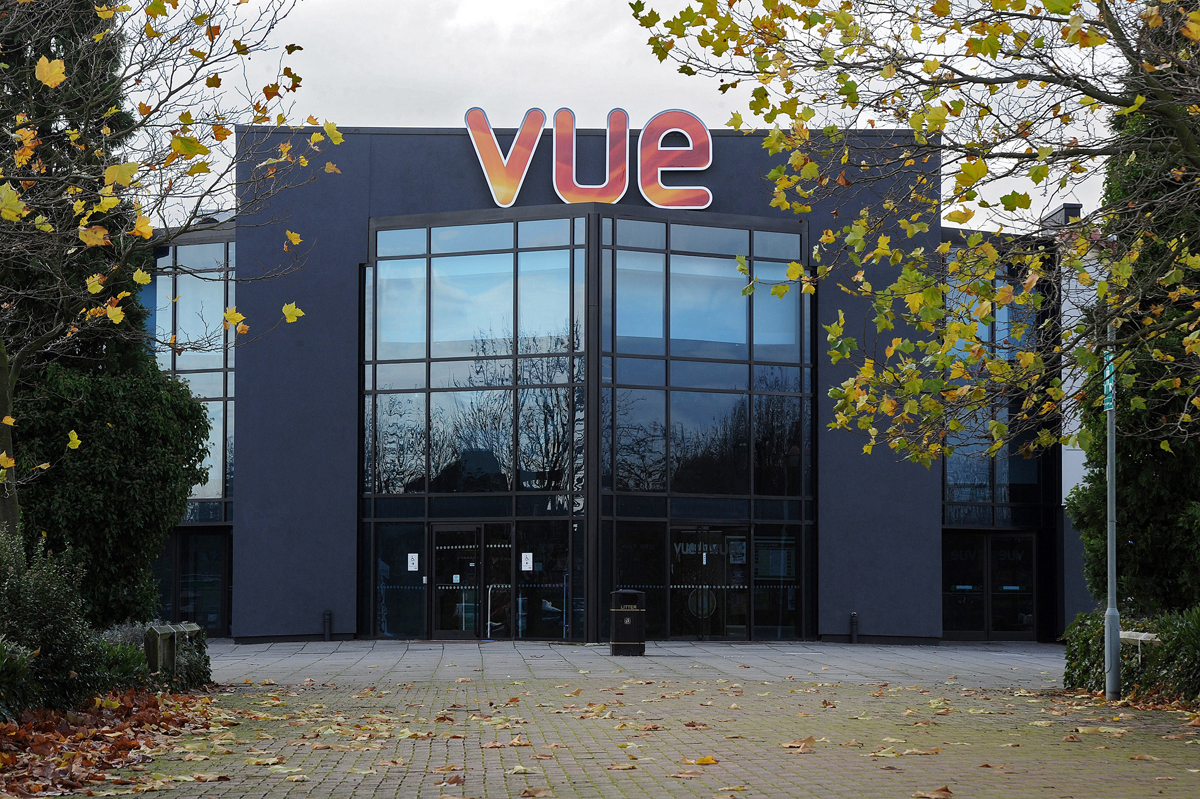
Vue Cinema, Doncaster. Odour-free Hydrostop AH+ liquid allowed the cinema to continue trading throughout refurbishment of the roof (ph: SIG)
How should liquid roofs be maintained after installation?
In common with all types of flat roof, liquid-based roofing systems should follow the recommendations of BS6229:2003 with regards to ongoing maintenance. They should be routinely inspected and cleared of any debris every spring and autumn – or more often if they are surrounded by trees. Failure to follow maintenance guidelines can invalidate manufacturer guarantees.
More Information
- Find out more about the virtually odour free Hydrostop AH+ liquid roofing product
- Find out more about quick drying Vulkem Liquid Roofing system
- Find out more about SIGnature PU Liquid Waterproofing System options
- Need advice? Contact us about your project here.
- This article originally appeared in Architecture Today in our series ‘Roofing in Detail‘




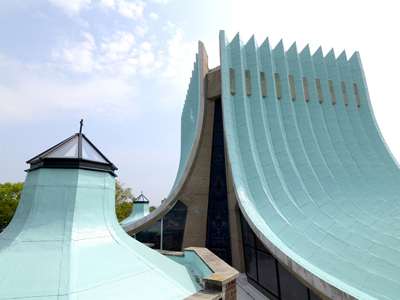
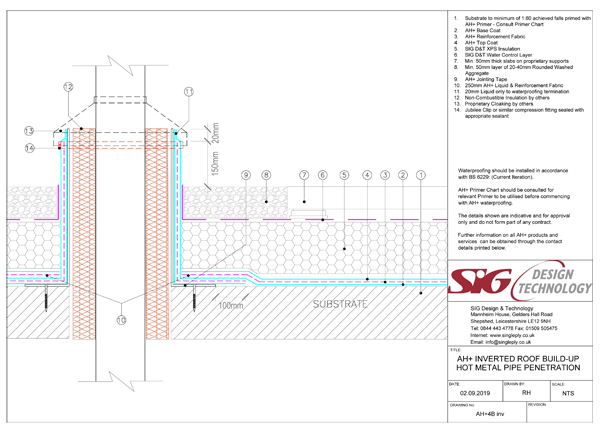









Recent Comments